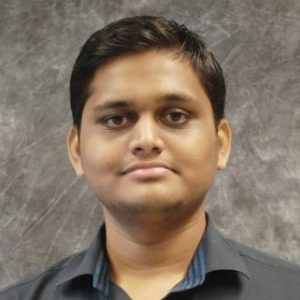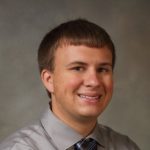Graduate Students and Postdoctoral Associates
Click Here to Jump to Alumni
Graduate Students

Zirui Fan |
Research InterestsEarth-abundant and environmentally friendly chalcogenide perovskites have recently become a focus of attention due to their high stability compared to halide perovskites. They are applicable to various energy conversion applications, especially in solar cells. My research focuses on synthesizing and characterizing chalcogenide perovskites, particularly BaZrS3. Educational Background2013-2017, B.S. Chemical Engineering, University of Delaware 2020-2022, M.S. Chemical Engineering, Columbia University Contact InformationFan406@purdue.edu |

James Zheng |
Research InterestsMy research interests focus on fabrication of chalcogenide perovskite films utilizing nanoparticles. Educational Background2020-2024, Bachelor’s degree in Chemical Engineering, University of California, Riverside Contact Informationzheng632@purdue.edu |

Robert Spilker |
Research InterestsI am interested in solution processed Cu(In,Ga)(S,Se)2 solar cells. By further studying amine-thiol chemistry I hope to develop novel methods of film fabrication with the goal of improving device performance and lowering manufacturing costs. Educational Background2016-2020, B.S. Chemical Engineering, Miami University Contact Informationrspilker@purdue.edu |
Visiting and Undergraduate Researchers
|
|
|
|
|
|
|
|
|
|
|
|
|
|
|
Alumni

Dr. Daniel Hayes |
Dr. Daniel Hayes’ research involved the use of a benign, solution-based approach to fabricate photovoltaic devices from chalcopyrite nanoparticles. His work also focused on manipulation of nanoparticle ligand chemistry in order to synthesize nanoparticles for fabrication of thin films with more favorable optoelectronic properties, ultimately leading to higher efficiency devices. |

Ryan Swope |
Ryan’s research focused on developing the chemistry for synthesizing chalcogenide perovskites using earth-abundant elements and exploring their potential use in photovoltaic devices as an alternative to current materials. |

Anna Murray |
Anna’s research focused on improving the material quality of solution processed ACZTSe nanoparticle films and optimizing their device architecture. She also worked on improving methods to extract device properties by characterizing absorber films. |

Dr. Apurva Pradhan |
Dr. Apurva Pradhan’s research focused on creating high efficiency and low cost solar cells that utilize earth abundant elements such as copper, arsenic, and sulfur. Solution-based approaches, including nanoparticle-based and molecular precursor-based film growth were utilized for the synthesis of solar cells. He also played an instrumental role in developing solution-chemistries for the solution-based synthesis of barium-based chalcogenide perovskites. |

Dr. Jonathan Turnley |
Dr. Jonathan Turnley’s research focused on developing and tuning the chemistry of molecular precursor inks for solution-processed Cu(In,Ga)(S,Se)2 thin films. Additionally, he applied similar chemistry to the synthesis of novel chalcogenide semiconductors, such as the chalcogenide perovskite BaZrS3. |

Dr. Kyle Weideman |
Dr. Kyle Weideman’s research focused on optimizing the performance of solution-processed thin film thermoelectric and photovoltaic devices in order to provide cost-effective and environmentally friendly energy solutions. By developing an in-depth understanding of chalcogenide thin film formation he strove to better engineer the composition and structure of these materials towards enhanced properties relevant to energy production applications. |

Dr. David Rokke |
Dr. David Rokke’s research focused on the design and optimization of molecular precursor inks for the fabrication of high-efficiency Copper-Indium-Gallium-Selenium (CIGS) solar cells. Specifically, he worked on more environmentally friendly processes that minimize or eliminate the use of hazardous materials in order to create a system that could be more easily scaled to an industrial process with the aim of reducing photovoltaic manufacturing costs. |

Dr. Shreyash Hadke |
Dr. Shreyash Hadke’s postdoctoral research focused on the use of optoelectronic characterization techniques to explore recombination mechanisms and point defect characteristics in thin film solar cells. |

Dr. Swapnil Deshmukh |
Dr. Swapnil Deshmukh’s research interest involved discovering a methodology to manufacture solar cells with higher efficiency, low cost of manufacturing and environment friendly chemical system. He worked on nanocrystal and quantum dots synthesis in which he came up with a novel and benign chemistry for synthesizing nanocrystals of various systems which made the idea of roll-to-roll solar cell processing more feasible. |

Dr. Essam Alruqobah |
Dr. Essam Alruqobah’s research interests were in nanocrystal-based approaches to develop low-cost photovoltaic devices. Dr. Alruqobah also investigated new and novel earth-abundant materials that can potentially be good candidates for PV devices. Dr. Alruqobah’s research also involved optoelectronic characterization of solar cell devices. |

Dr. Ryan Ellis |
In Dr. Ryan Ellis’ research he investigated methods to create highly efficient, low cost, solution processed thin film photovoltaic devices. Solution processing is a promising method of device fabrication which forgoes typical high vacuum processes. As such, solution processing can allow for roll to roll fabrication of solar cells, significantly bringing down the cost of manufacturing. Dr. Ellis explored the ligand chemistry of CIGS nanocrystals for use in CIGSSe photovoltaics. |

Dr. Joseph Andler |
The motivation behind my research is to develop and/or enhance sustainable energy technologies, especially solar. In general, I am interested in understanding grain nucleation, growth, and facets in order to engineer improved thin film devices. I hope to understand these mechanisms in the context of novel PV materials. |

Dr. Xianyi Hu |
Dr. Xianyi Hu’s research involved investigation of cost effective solution processed thin film solar cells regarding band gap engineering between the p-type and n-type materials, as well as developing novel absorber materials in TiO2 architecture based photovoltaic devices. |

Dr. Scott McClary |
Dr. Scott McClary’s research focused on the application of novel chalcogenide materials in solar cells and thermoelectric devices. The promise of such materials lies in their constituent earth abundant elements and predicted optimal optoelectronic properties. Solution-based methods, including nanoparticles and molecular precursors, are used in order to minimize processing costs and ensure scalability. |

Dr. Caleb Miskin |
Dr. Caleb Miskin’s work focused on solving humanity’s grand challenges at the nexus of food, energy, and water needs with an emphasis on solution-processed electronic devices such as photovoltaics and thermoelectrics. Caleb’s work was very diverse, spanning solution processed CZTS as an earth abundant absorber, molecular precursor based cadmium telluride photovoltaics, and solar spectrum splitting for food, energy, and water applications. |

Dr. Brian Graeser |
Dr. Brian Graeser worked on the development of nanoparticle syntheses and sintering processes for new photovoltaic absorber materials using earth abundant elements for solution processed photovoltaics. |

Dr. Mark Koeper |
Dr. Mark Koeper’s research interests involved fabricating solution processed thin-film photovoltaic devices and electrical and optical characterization of thin-film solar cells. Dr. Koeper was actively involved in using admittance spectroscopy to study defects in multiple photovoltaic devices to enhance understanding of their limitations. Dr. Koeper was also involved in fabricating derivatives of the CZTS absorber layer with the goal of reducing inherit defects and improving device performance. |

Dr. Steven McLeod |
Dr. Steven McLeod’s research focused on the thermal processing of solution based CIGS nanoparticle films. As coated nanoparticle films make poor solar cell absorbers and must be converted to large-grain crystals, this is accomplished by a high temperature selenization process. Steven’s research goal yielded a deeper kinetic understanding of the selenization step, and has allowed for use of the information gained to optimize our processing methods and create high efficiency solar cells. |

Dr. Xin Zhao |
Dr. Xin Zhao worked on the development of high-efficieny, scalable, environmental friendly and low-cost solution processed thin film solar cells, specifically the use of molecular precursor solutions to cast films of CIGSe for solution processed photovoltaics. |

Dr. Chuck Hages |
Dr. Chuck Hages worked on nanocrystal synthesis of metal chalcogenide materials for semiconductor applications: – Detailed electronic characterization and modeling of semiconductor devices – Developed novel material systems for photovoltaic applications – Investigated absorber sintering/coarsening mechanisms through rapid thermal processing – Designed and constructed/developed evaporation, sputtering, and thermal processing equipment – Optoelectronic and materials characterization of semiconductor nanocrystals and absorbers – Fabricated record efficiency Cu2Zn(Sn,Ge)(S,Se)4 solar cells and nanocrystal-based Cu2ZnSn(S,Se)4 solar cells – Published eleven peer-reviewed journal articles, twelve conference proceedings, and a book chapter – Delivered eight research presentations to international audiences at professional meetings – Collaborated in international and multi-disciplinary research projects |

Dr. Erick Sheets |
Dr. Erick Sheets focused on the following areas of research: |

Dr. Kevin Brew |
Dr. Kevin Brew worked on solution processing of nanoparticles for photovoltaic applications. His background is in nanoparticle materials synthesis and characterization, specifically with ligand chemistry.
|

Dr. Ruihong Zhang |
Dr. Ruihong Zhang worked to develop a versatile direct solution route for the deposition of metal chalcogenide semiconductor materials. Metal chalcogenides include binary, ternary, and quaternary sulfides and selenides. Dr. Zhang worked on the following: – Fabricate copper zinc tin selenide thin-film solar cells with power conversion efficiencies of 8% using the developed solution route. – Study the correlation between composition and solar cell performance. – Characterize nanoparticles and thin films using XRD, Raman, SEM/FIB, SEM/EDX, TEM, and STEM. – Characterize solar cell performance based on J-V and external quantum efficiency. – Initiate the direct solution processing study in the lab, and patented the developed solution route in August 2014. |

Dr. Nathan Carter |

Dr. Bryce Walker |
Low-cost photovoltaics from nanomaterials utilizing liquid deposition techniques First lab safety administrator April 2011-July 2012 Developed safety instruction, methods for communicating safety concerns, and lab safety manual Senior lab member since May 2011 Responsible for training, mentoring, and overseeing other grad students, postdoctoral researchers, and undergraduate students Assisted in writing research grant proposals |

Dr. Grayson Ford |
Responsible for all steps in the device fabrication process (metal PVD, QD synthesis, ink coating, rapid thermal processing, chemical solution deposition, TCO PVD, thermal evaporation of grid) – Responsible for all characterization (IV, EQE, CV, XRD, TEM, SEM, EDX, UV-vis) – Expanded Cu2ZnSn(S,Se)4 (CZTS) material system to include Ge for band gap profile engineering of Cu2Zn(Sn,Ge)(S,Se)4 solar cells from CZTGS nanocrystal ink (6.8% efficiency achieved) – In team of three, achieved penultimate efficiency for CZTS solar cells (2010-2011) – In team of two, developed fabrication procedure for 12% efficient solar cells from Cu(In,Ga)S2 nanocrystal inks, with ~2% absolute efficiency increase per year (average) over project lifetime |

Dr. Qijie Guo |
Pioneered the development of solution-based methods for the fabrication of high-efficiency CIGSSe and CZTSSe thin film solar cells using chalcogenide nanoparticles. Developed commercially-relevant processing technologies for the fabrication of high-efficiency thin film solar cells using chalcogenide nanoparticles. |

Dr. Mahaprasad Kar |
Proposed the mechanism of formation of CuInSe2 nanocrystals based on spectroscopic data and thermodynamic calculations for applications in low-cost solar cells. – Developed a low-cost, chemical liquid deposition method of CuInSe2 thin films on flexible substrates. – Fabricated device-quality films followed by complete device fabrication into functional solar cells. – Installed solar cell testing equipment and performed electrical characterization of the flexible solar cells. – Modeled the solar cells to identify the shortcomings and improved device efficiency by optimizing device-processing steps. |

Dr. Hye Yeon Park |
Development of synthetic procedure for tunable composition of multinary nanoparticle and nanocrystal ink to control material/optical properties: Nanoparticle synthesis, film deposition and device fabrication of novel nancrystals for photovoltaic applications. Device fabrication process for thin film solar cells: PVD, hot-injection synthesis, nanocrystal ink coating, chemical vapor deposition, TCO PVD |

Chinmay Joglekar (M.S.) |
I worked on developing new materials for solar cells which would be cost effective, easy to scale and widely available. I worked with a team of engineers and scientists to improve solar cell efficiency of CZTS solar cells from 7.2 to 9.2 % |

Bethlehem Negash (M.S.) |
Synthesize nanoparticles, via solution based route, for the application of thin film solar cells. Analyze size, structure, and elemental composition of synthesized nanoparticles via PXRD, SEM and Raman Spectroscopy. Produce finished photovoltaic devices and characterize device properties. |

Robert Boyne (M.S.) |
Research InterestsMy research involved looking at alternative solar cell architectures for traditional thin-film materials.The long term goal is to find architectures to make devices from new experimental materials.The long term goal is to be able to compare newly developed materials to existing materials and examine their fundamental properties in a working device. Current materials either involve rare, limited elements or are fundamentally limited in efficiency. Proper understanding of these materials is necessary to evaluate which materials may be effective advancements for earth-abundant thin-film solar cells. |









